Faced with necessity, a response: Operation Balmis
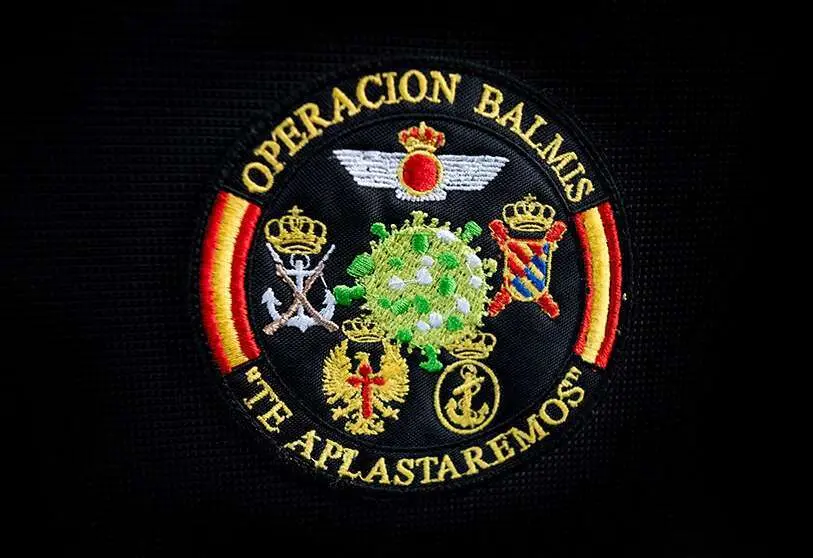
At the end of March last year, it became clear that the health crisis would not only be long, but would require a greater effort, which is why Operation Balmis was set up ad hoc by the Land Component Command (MCT) at the Buenavista Palace, headquarters of the Spanish Army's General Headquarters. In response to the need for a response, the MCT set up non-specific decontamination teams to carry out preventive NBC missions, which allowed it to support the civilian population with more effective action.
The army had to make a colossal effort through the Logistics Support Command (MALE), procuring medical equipment, setting up field hospitals, setting up physical facilities such as hospitals, as well as homeless camps and shelters. They also provided transport support to food banks, transport of medical supplies and drinking water, among other missions.
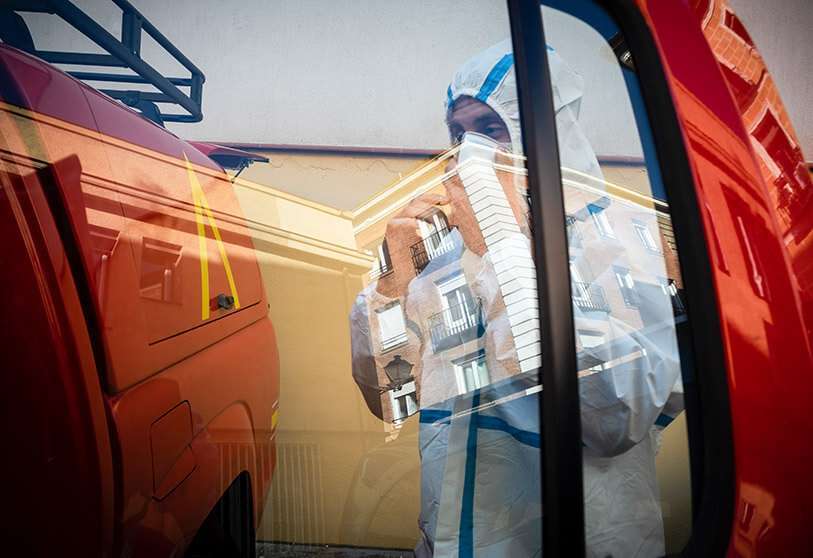
Operation Balmis has been a before and after in every sense and has mainly shown that Spain has at its disposal an "Army of Heroes" ready to give their all for their compatriots: The Spanish Armed Forces, of which we can be very proud.
Operation Balmis was formed 'ad hoc' in the Land Component Command (LCC), subordinate to the Operations Command (MOPS), which leads this mission. The Army Chief of Staff, General Varela, delegated the leadership of the MCT to Lieutenant General Palacios, head of the Canary Islands Command, where the Land Presence and Surveillance Command is located.
The mission was named Operation Balmis in memory of the doctor Javier Balmis, who was in charge of bringing the smallpox vaccine to Latin America during the reign of Charles IV in early 19th century.

During the first weeks, the army carried out almost 4,000 actions, in addition to collaborations with the police and the Civil Guard, involving more than 2,000 soldiers every day since March 16. This is a very positive balance, and the largest mobilisation of the army in recent decades. So much so that the sum of the daily number of soldiers involved in Operation Balmis gives a total of 187,000 troops.
The operation's structure was divided into two core areas: the Plans area and the Operations Centre, both coordinated by the Command area, led by the head of the MCT and his Chief of Staff.
On the one hand, the Plans area receives requests from the MOPS, which indicate requests coming from anywhere in Spain. The army adapts to the needs of society and generates new capabilities. In this way, the operations to be carried out are planned in the short term and according to the demands received. On the other hand, once the mission has been handed over to the units, the Operations Centre takes control. It registers any type of incident, the need for contact with the State Security Forces and Corps, and has a direct link with all the patrols and support units that are in progress. It is also in charge of logistics, personnel and material resources.

In a new development, most nations have sought the support of their militaries to assist, in one way or another, civilian institutions in managing the pandemic.
The tasks entrusted to them have varied widely. The military has been involved in a wide range of tasks, from assisting in the control of the confinement of the population, to disinfection, to providing food and water to those most in need, to health care. The most common use governments have made of their Armed Forces, however, has perhaps been to expand logistical capabilities. The rapid construction of field hospitals, the evacuation of nationals and their contribution to ensuring a safe and rapid supply of medical equipment have been the most visible tasks that have shown the military to be a key support for crisis assistance, and thus for social welfare and humanitarian aid. As in other natural disasters, the pandemic has highlighted the human face of the military.

There are two types of decontamination carried out in the framework of Operation Balmis: preventive decontamination, which is carried out when there is no confirmation that there are any positives; and reactive decontamination, which is carried out when there are positives. For the former, no specific units are required; for the latter, more highly qualified personnel are needed, which is why the Regiment itself or the NBC companies of the Brigades, which periodically attend exercises organised by this unit to maintain their level of preparedness, are in charge.
Nursing homes were among the places where most of these interventions had to be carried out - up to 5,300 disinfections in nursing homes. Other areas of intervention have focused on critical infrastructures, such as airports, traffic control centres, fire stations, police stations, fire stations, health facilities, prisons and juvenile detention centres, among others.
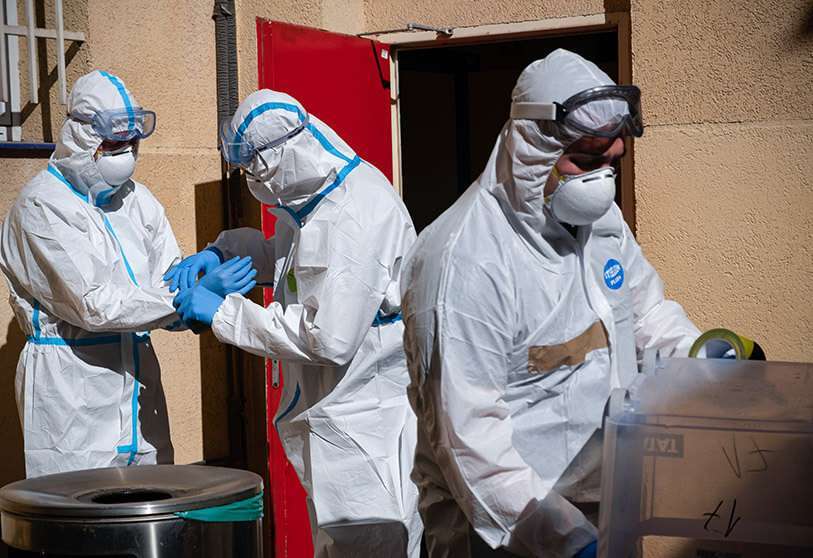
Given the large number of deaths in the first few weeks and the saturation of funeral services in Madrid, the Autonomous Community of Madrid requested assistance from the Armed Forces for the transfer of corpses. The Military Emergency Unit (UME) took charge of this task, with the support of NBC units of the Spanish Army. They were in charge of collecting, bagging the body - twice - and placing it in the coffin for another team to transport it to wherever the Community indicated; in this case, most of them went to the provisional morgues, which remained open for a month.
The Spanish Armed Forces have also been involved in the vaccination campaigns - which began in late 2020 and early 2021 - to ensure that the whole process is carried out properly. In some cases, SAF involvement has been in transporting or escorting vaccines from production plants to distribution centres. The Spanish Minister of Defence has also opened up the possibility to the autonomous communities, upon request, for military health personnel to participate in the administration of vaccines in order to speed up the process of immunising the population.
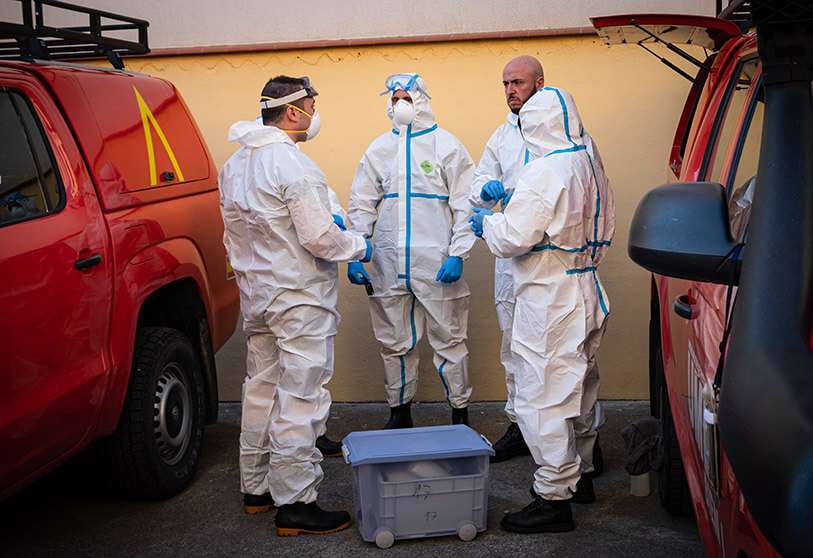
This pandemic has highlighted a situation that has been emerging for several years. We find ourselves in a new security environment where threats are more indiscriminate, more complex and unpredictable. In this new scenario, no country can face these new challenges alone.
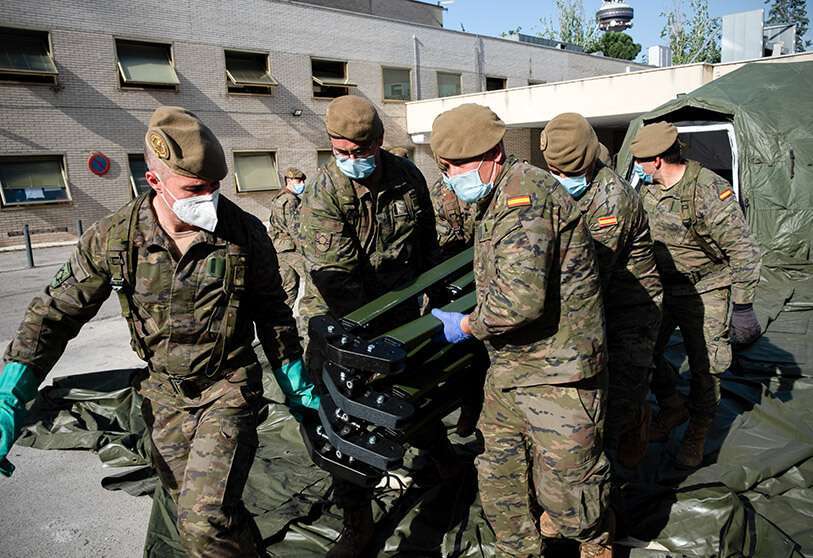
Moreover, within a state, it will be necessary to move towards using all its resources in a coordinated, effective and efficient manner to offer a response that allows a return to normality as soon as possible to counteract the negative effects of a disruptive event.
This situation has marked a before and after in all senses, and has mainly shown that Spain has at its disposal Armed Forces ready to give their all for their compatriots. Armed Forces of which we can be much more than proud and on which we must rely to overcome this crisis, which will only be achieved with confidence in the institutions and also with the responsibility of the population. In an environment dominated by uncertainty, confidence in the institutions helps to keep the population together and to create the security environment necessary for the prosperity of the country as a whole.

José Javier Fernández Hernández/ Master's Degree in Security, Peace and International Conflicts/ Diploma in Higher National Defence Studies/ Collaborator in the National Defence Area of Sec2Crime.
- Hidalgo García, M. (2021). El papel de las Fuerzas Armadas en la gestión de la COVID-19 como generador de confianza. Instituto Español de Estudios Estratégicos.
- Lázaro, F. (2020). Casi 2.500 militares recibieron apoyo psicológico tras participar en la ‘operación Balmis’ por la crisis del coronavirus. El Mundo. Recuperado de: https://www.elmundo.es/espana/2020/06/18/5eeb7ea2fdddff986a8b4576.html
- Tierra Edición Digital. Núm. 56 (mayo 2020). Operación “Balmis”. Recuperado de: https://publicaciones.defensa.gob.es/revistas.html
